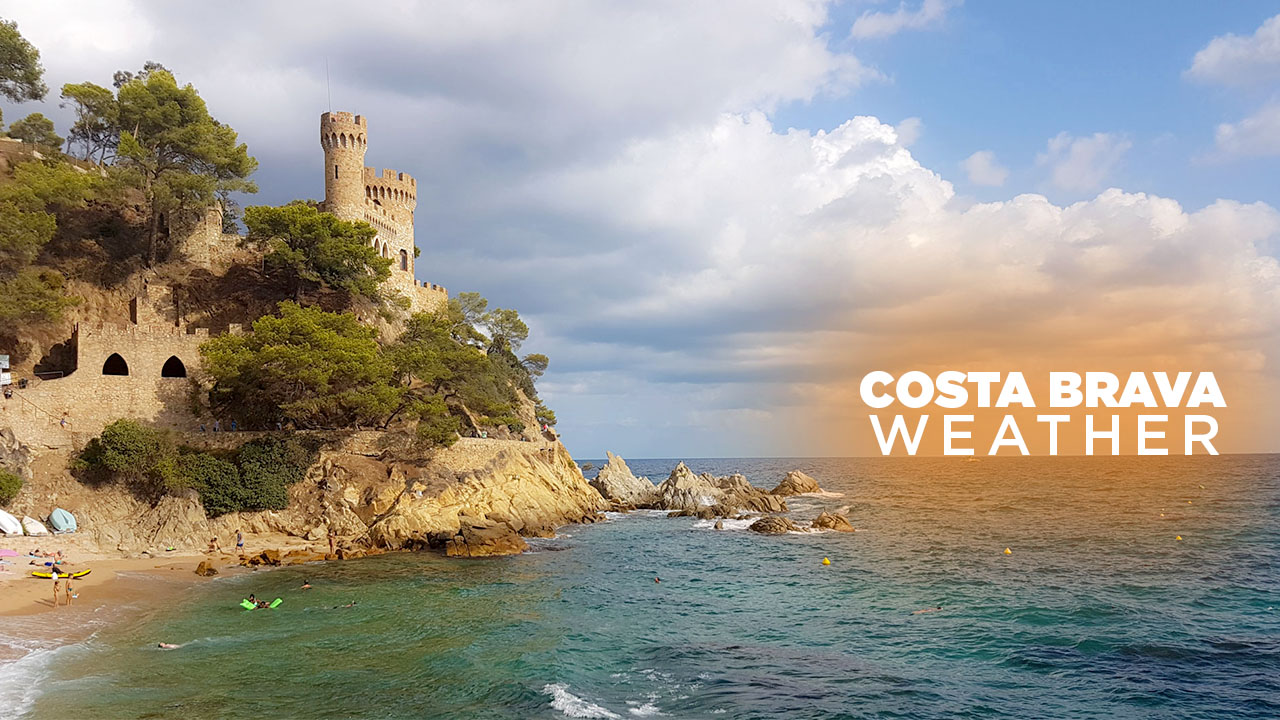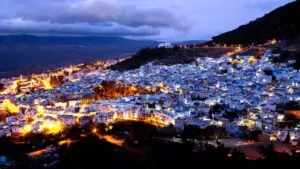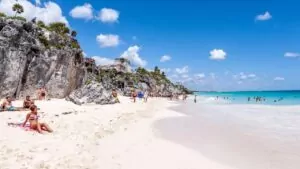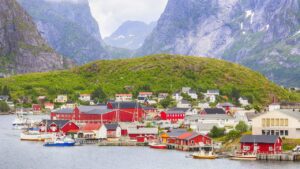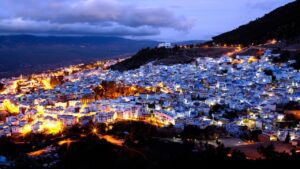Costa Brava, stretching along Spain’s northeastern Mediterranean coast, is celebrated for its breathtaking beaches, vibrant towns, and a climate that draws millions of visitors each year. Understanding Costa Brava weather is crucial for travelers, residents, and anyone planning outdoor activities or events in this picturesque region. This comprehensive guide details the climate, seasonal variations, recent weather events, and practical insights, ensuring you have all the information you need about Costa Brava weather for any time of year.
The Mediterranean Climate of Costa Brava
General Climate Overview
Costa Brava enjoys a classic Mediterranean climate, which means:
- Hot, dry summers with abundant sunshine.
- Mild, wetter winters compared to much of Europe.
- Distinct seasonal transitions that affect everything from local festivals to outdoor activities.
Annual Temperature Range
- Annual average temperature: 15°C to 20°C (59°F to 68°F).
- Summer highs: 25°C to 31°C (77°F to 88°F), peaking in July and August.
- Winter lows: 4°C to 7°C (39°F to 45°F), with January as the coldest month.
- Sea temperatures: Warmest in August, reaching up to 26°C (79°F).
Rainfall and Sunshine
- Average annual rainfall: 600–700 mm (23.6–27.6 inches).
- Wettest months: September to November, especially October (up to 101 mm).
- Driest months: July and August, with as little as 6–33 mm of rain.
- Sunshine: 2,500–2,800 hours annually, with July and August offering up to 11 hours per day.
Humidity and Wind
- Humidity: Ranges from 66% in summer to 78% in spring and autumn.
- Winds: Moderate, with southeast winds warming the coast in summer and the northerly Tramuntana cooling spring nights.
Detailed Seasonal Breakdown: Costa Brava Weather by Season
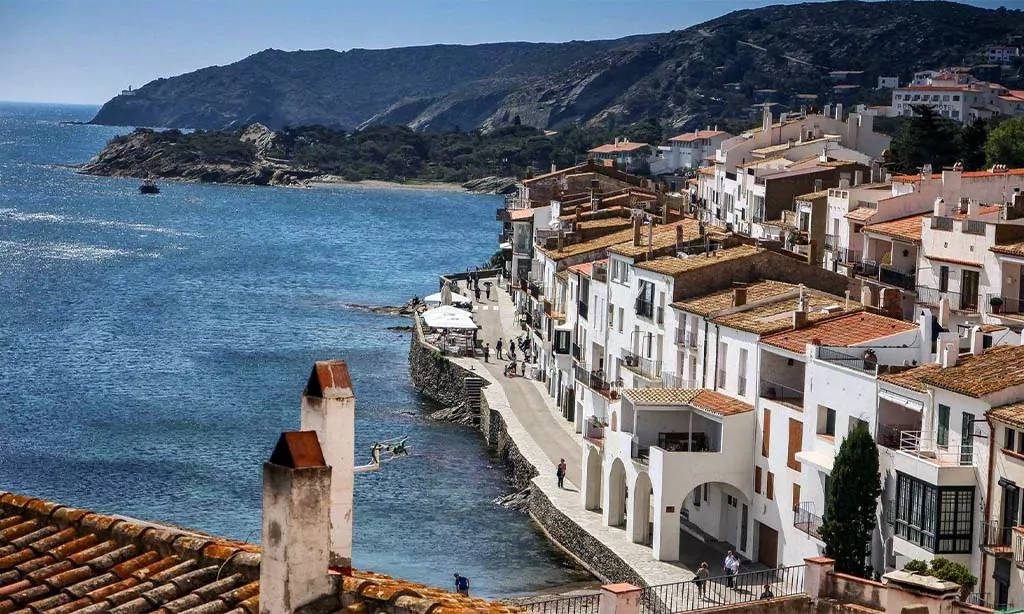
Spring (March to May)
Spring is a period of renewal and mild weather in Costa Brava:
- Temperatures: 11–23°C (52–73°F).
- Rainfall: 62–82 mm in May, spread over 3–8 rainy days.
- Sunshine: 9–11 hours per day.
- Sea temperature: Begins to warm, but swimming is best from late May onwards.
Spring Highlights:
- Blooming flowers and lush landscapes.
- Fewer tourists, making it ideal for tranquil sightseeing.
- Occasional rain showers—pack a light jacket or umbrella.
Summer (June to August)
Summer is peak season for Costa Brava, with hot, sunny weather and bustling beaches:
- Temperatures: 25–31°C (77–88°F), with July and August as the hottest months.
- Rainfall: Minimal, with July often the driest month (6–33 mm).
- Sunshine: Up to 12 hours per day; July is the sunniest.
- Sea temperature: 23–26°C (73–79°F), perfect for swimming and water sports.
Summer Highlights:
- Major festivals like Cap Roig and Sant Joan.
- Crowded beaches and lively nightlife.
- Best time for beach holidays, but book accommodations early due to high demand.
Autumn (September to November)
Autumn brings milder temperatures and increased rainfall:
- Temperatures: 14–25°C (57–77°F).
- Rainfall: Peaks in October (up to 101 mm), often with thunderstorms.
- Sunshine: 7–10 hours per day.
- Sea temperature: Still warm in September and October (22–23°C).
Autumn Highlights:
- Fewer tourists and lower prices.
- Vibrant local festivals (e.g., Festa Major de Sant Narcís).
- Ideal for hiking and cultural tours.
Winter (December to February)
Winter in Costa Brava is mild compared to much of Europe:
- Temperatures: 4–14°C (39–57°F), with January as the coldest month.
- Rainfall: Lower than autumn, with February often the driest month.
- Sunshine: 5–7 hours per day.
- Snow: Rare along the coast, more likely inland at higher altitudes.
Winter Highlights:
- Peaceful atmosphere and fewer tourists.
- Christmas markets and Carnival celebrations.
- Some attractions and restaurants may close or have reduced hours.
Monthly Costa Brava Weather Averages
| Month | Avg High (°C) | Avg Low (°C) | Rainfall (mm) | Rainy Days | Sunshine (hrs/day) | Sea Temp (°C) |
| January | 13–14 | 4–7 | 40 | 6–7 | 5–6 | 13 |
| February | 14–15 | 2–4 | 35–40 | 5–7 | 6–7 | 13 |
| March | 16–18 | 7–9 | 48 | 7 | 9 | 14 |
| April | 16–19 | 10–11 | 62–82 | 4–8 | 10 | 15 |
| May | 20–23 | 14 | 59–68 | 3–11 | 11 | 16 |
| June | 25–27 | 17 | 33 | 3 | 12 | 20 |
| July | 29–31 | 20 | 6–33 | 2–3 | 11–12 | 24 |
| August | 29–31 | 20 | 6–33 | 2–3 | 11–12 | 26 |
| September | 24–25 | 15 | 68–101 | 9–11 | 9–10 | 23 |
| October | 22–23 | 11 | 73–101 | 9–11 | 8 | 22 |
| November | 16–17 | 6 | 60 | 9 | 7 | 18 |
| December | 13–14 | 4–7 | 45 | 7 | 5–6 | 14 |
Data sourced from Met Office, Weather2Travel, WorldWeatherOnline, and other verified providers.
Recent and Notable Costa Brava Weather Events
Spring 2025: Typical Mediterranean Variability
April 2025 in Costa Brava featured a mix of sunny days and moderate rainfall:
- Average highs: 16–17°C (61–63°F).
- Rainfall: Up to 82 mm, with rain on about 4–6 days.
- Humidity: Around 73–78%.
- Winds: South winds averaging 12–30 mph; moderate breezes common.
Despite some heavier showers, most days remained pleasant, and outdoor activities continued with minimal disruption. Local authorities responded efficiently to minor flooding in low-lying areas, and tourism was largely unaffected.
Summer 2024: Record Sunshine
- July and August: Up to 12 hours of sunshine per day, highs of 30–31°C (86–88°F), and very little rain.
- Sea temperatures: Reached 26°C (79°F), ideal for swimming and water sports.
Extreme Weather Records
- Coldest recorded temperature: -13°C in February 1985.
- Snowiest month: February 2005, with 3 snowy days.
- Wettest month: October, with up to 101 mm of rain and frequent thunderstorms.
Costa Brava Weather: How It Shapes Life and Tourism
Impact on Tourism
Costa Brava weather is a major draw for tourists, especially in summer. The region’s climate supports a vibrant tourism industry, with peak seasons aligning with the warmest, sunniest months. However, climate change poses challenges, with projections suggesting that rising temperatures could reduce high-season tourism by up to 10–15% in the coming decades.
Best Times to Visit Costa Brava
- Beach holidays: June to September for warm seas and maximum sunshine.
- Cultural exploration: Spring and autumn for mild weather and local festivals.
- Budget travel: Winter for lower prices and fewer crowds.
Events and Festivals by Season
- Summer: Cap Roig Festival, Sant Joan Festival (bonfires, fireworks).
- Autumn: Festa Major de Sant Narcís (Girona), Cavatast gastronomy fair.
- Winter: Christmas markets, Carnival parades in Roses and Platja d’Aro.
- Spring: Easter celebrations (Setmana Santa), blooming landscapes.
Practical Travel Tips for Costa Brava Weather
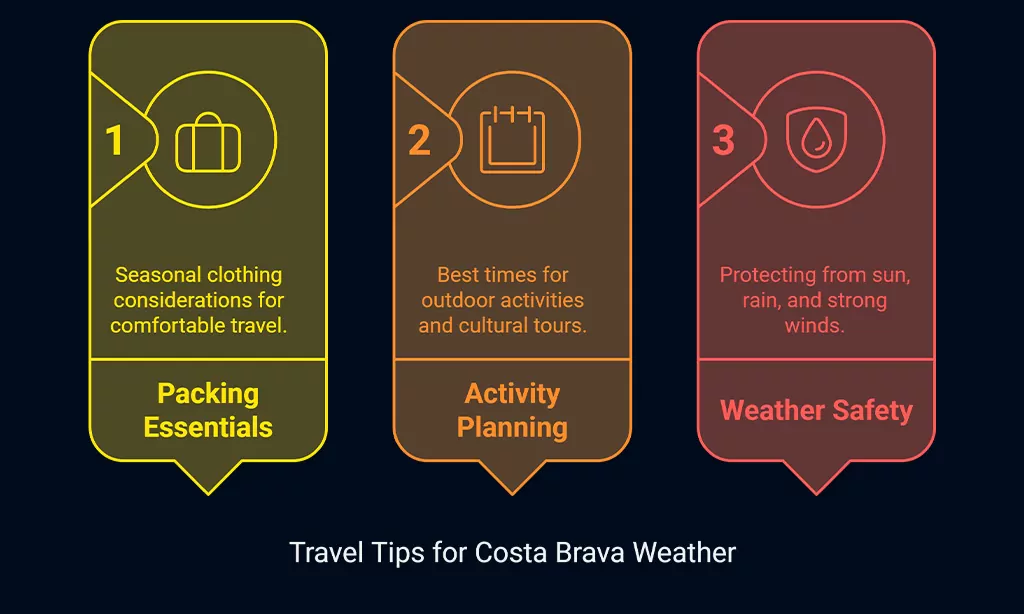
What to Pack
- Summer: Light, breathable clothing, sunscreen, hats, and swimwear.
- Spring/Autumn: Layers, a light rain jacket, and comfortable walking shoes.
- Winter: Warm jacket, gloves, and scarves for chilly evenings; some days may still be mild enough for light clothing.
Planning Activities
- Beach and water sports: June to September for the best conditions.
- Hiking and cycling: Spring and autumn, when temperatures are comfortable and landscapes are lush.
- Cultural tours: Year-round, but spring and autumn are ideal for avoiding crowds and heat.
Weather-Related Safety
- Sun protection: UV levels can be high, especially in summer—use SPF and seek shade during peak hours.
- Rainy periods: October and November can bring heavy showers and thunderstorms—check forecasts and plan accordingly.
- Winds: Moderate to strong winds are common, particularly in spring and autumn, so be cautious with outdoor water activities.
Costa Brava Weather: Frequently Asked Questions
Is Costa Brava weather suitable for year-round travel?
Yes, Costa Brava weather is generally mild and pleasant throughout the year, making it a viable destination for all seasons.
When is the best time to visit for sunshine and swimming?
July and August offer the most sunshine and the warmest sea temperatures, ideal for beach holidays.
Does it snow in Costa Brava?
Snow is rare on the coast but can occur inland during particularly cold winters.
How much does it rain in Costa Brava?
Rainfall varies by season, with the wettest months in autumn (especially October) and the driest in summer (July and August).
Is the sea warm enough for swimming year-round?
The sea is warmest from June to October, with August being the best month for swimming. It can be chilly outside this period.
Costa Brava Weather and Climate Change
Long-Term Trends and Challenges
Climate change is impacting Costa Brava weather, with rising temperatures and shifting rainfall patterns. Projections indicate:
- Hotter summers and more frequent heat waves.
- Potential decrease in summer tourism due to excessive heat, with a projected drop of up to 15% in high-season demand if temperatures rise by 4°C.
- Extended shoulder seasons: Spring and autumn may become even more attractive for travel as summers get hotter.
Costa Brava Weather: City-Specific Climate Snapshots
Lloret de Mar
- Hottest month: August, with highs up to 28°C (82°F).
- Wettest month: October, 101 mm of rain on average.
- Sunniest month: July, with 9 hours of sunshine per day.
Girona
- Average highs: 14°C in January, 31°C in July/August.
- Rainfall: Peaks in October, with thunderstorms common.
Takeaways
Costa Brava weather is a defining feature of this beloved Spanish region, offering hot, sunny summers, mild winters, and a climate that supports vibrant tourism, outdoor adventures, and rich cultural experiences. Whether you’re planning a summer beach escape, an autumn hiking trip, or a winter getaway, understanding Costa Brava weather ensures you can make the most of your visit.
Stay informed with up-to-date forecasts, pack appropriately for the season, and enjoy everything Costa Brava has to offer—no matter the weather.

